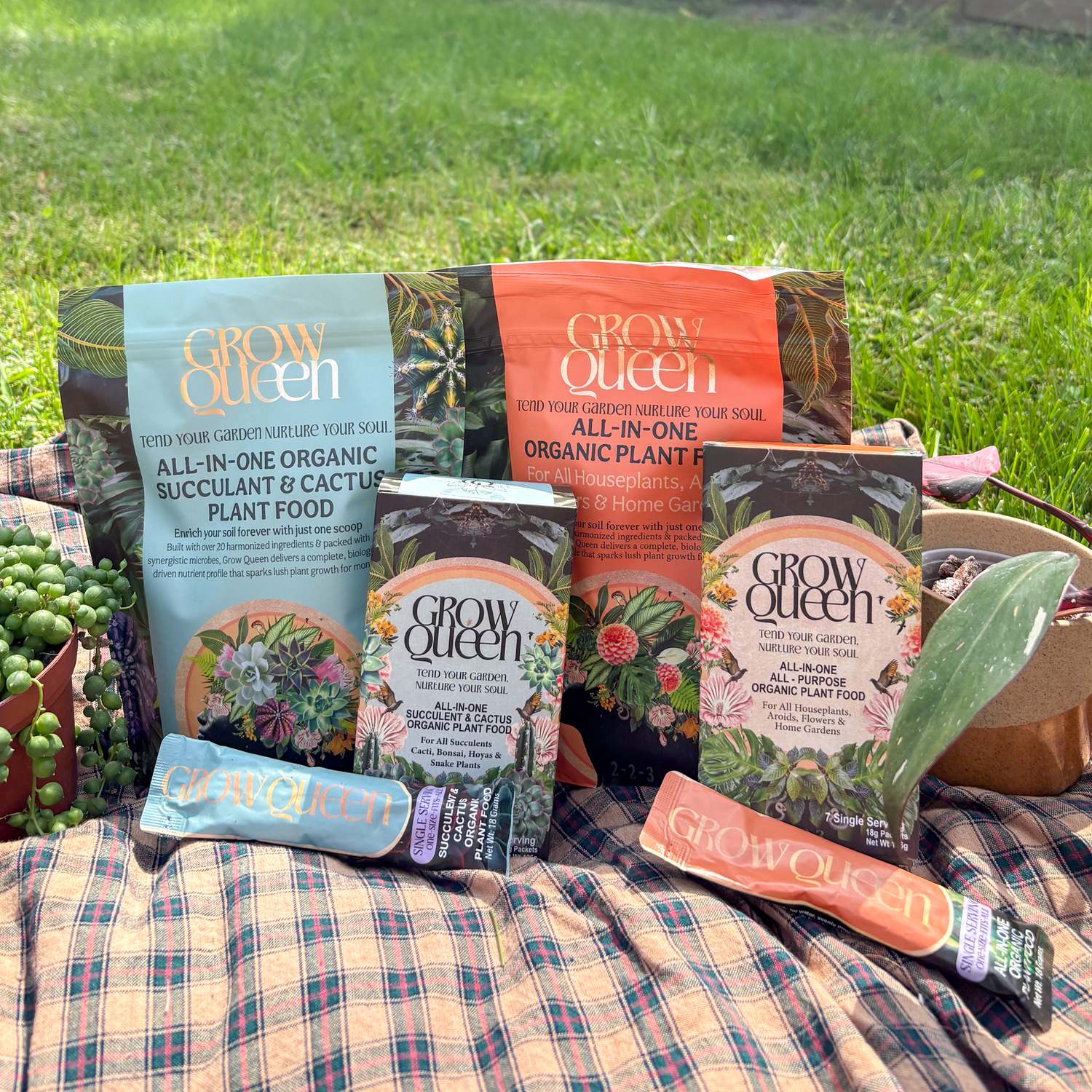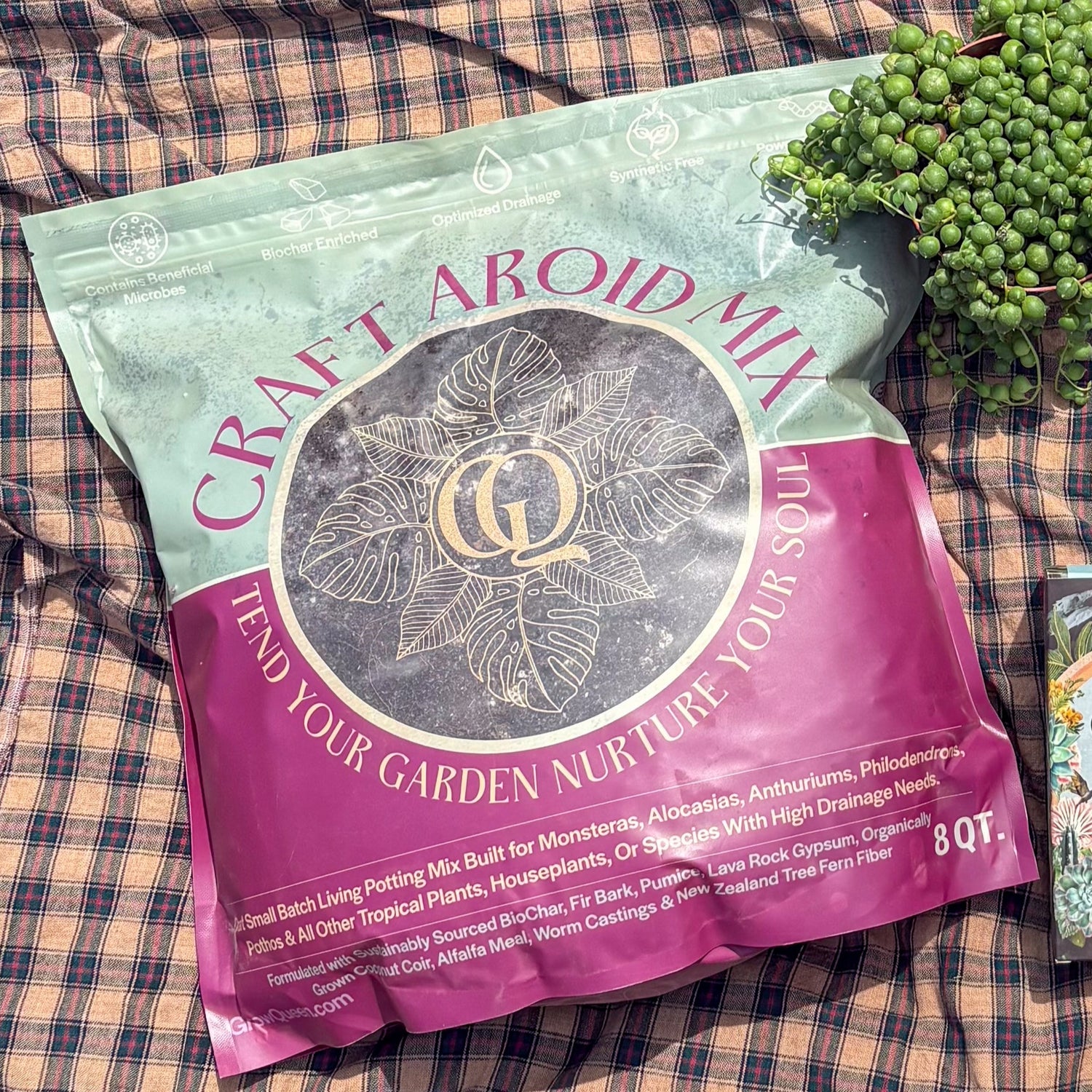If you’ve ever read a plant care tag or blog post, you’ve probably seen phrases like “bright indirect light,” “medium light,” or “low light.” But what do those actually mean? Are we supposed to carry around a light meter and measure every sunbeam? (Don’t worry—you don’t have to.)
At Grow Queen, we like to keep things simple. Here’s a breakdown of the main types of indoor lighting so you can match your plants with their perfect spot:
🌞 Bright Direct Light
This is the plant equivalent of lying on the beach at noon with no sunscreen. Direct sunlight beams right onto the leaves for several hours a day.
-
Where you’ll find it: Right in front of a south- or west-facing window (no sheer curtains).
-
Who loves it: Cacti, succulents, and some flowering plants that crave intense rays.
-
Watch out for: Leaf scorch! Most tropical houseplants don’t want to sit in the hot seat all day.
🌤 Bright Indirect Light
This is the sweet spot for most tropicals. Think of it as sitting in the shade on a sunny day—you’re getting tons of light, but without the harsh burn.
-
Where you’ll find it: A few feet back from a sunny window, or filtered through sheer curtains.
-
Who loves it: Monsteras, philodendrons, fiddle leaf figs, pothos, hoyas—basically the Instagram-famous crew.
-
Watch out for: If your plant starts leaning toward the window, it’s begging for a little more glow.
🌥 Medium Indirect Light
Not too harsh, not too dim—just right for easygoing plants. This light mimics dappled sunlight under a tree canopy.
-
Where you’ll find it: East-facing windows, or a few feet away from bright windows in other directions.
-
Who loves it: Aglaonemas, calatheas, peperomias, and many ferns.
-
Watch out for: Growth may be slower, so don’t expect jungle-level expansion.
🌑 Low Light
Important truth: low light does NOT mean no light. Plants still need some natural light to survive. But low light is like living in a cozy, shady corner—less intense, but still livable for the right plants.
-
Where you’ll find it: Rooms with north-facing windows, or spots far from windows but still within sight of daylight.
-
Who loves it: Snake plants, ZZ plants, pothos, and peace lilies—true survivors.
-
Watch out for: Overwatering! With less light, plants drink slower. Adjust your watering schedule accordingly.
💡 Bonus: Artificial Light
Don’t have enough natural light? Grow lights to the rescue! They mimic the sun and can supplement your plant’s needs, especially in winter or darker homes.
🌍 Light Changes with Location and Season
Here’s a game-changer: the amount and intensity of light you get indoors isn’t the same everywhere—or every time of year.
-
Location matters: A south-facing window in Colorado will feel very different from one in Florida. Higher elevations and sunnier climates give you stronger, more direct rays.
-
Season matters too: In summer, the sun is higher in the sky and days are longer, so plants get more light overall. In winter, the sun sits lower, days are shorter, and your “bright” window may suddenly feel more like medium light.
That’s why it’s smart to adjust your plant’s placement throughout the year. Moving them closer to windows in winter or pulling them back in summer can make all the difference.
✨ Final Thoughts
Light is food for your plants—it powers everything from leaf growth to root strength. When you understand the different light levels and how they shift with time and place, you’ll know exactly where to put your green friends so they can thrive (and avoid crispy leaves or sad, stretchy stems).
Remember: Bright doesn’t always mean direct, and low doesn’t mean no. Stay flexible with the seasons, find the balance, and your plants will reward you with lush, happy growth. 🌿



1 comment
Funny, I just relocated and repotted some of my plants just last night. Many of my choices went right along with your suggestions. Thanks for sharing!